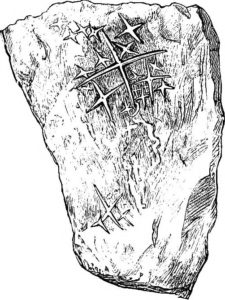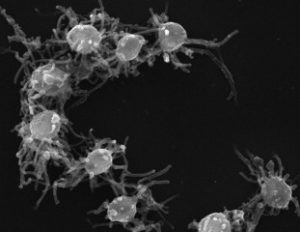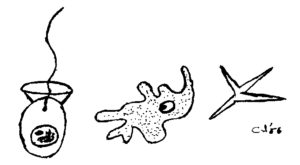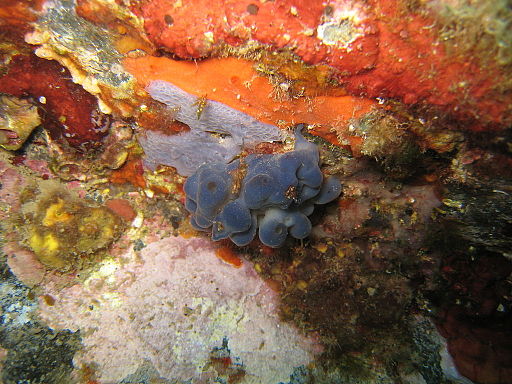This isn’t the type of fossil they were looking for.



The spicule type of sponge cell appearing on the right appears to correlate with the fossil pictured on the rock surface above it.
About the Image above: Fossil Hexactinellida. This group has the distinction of including among its Lyssacine members the oldest known sponge, Protospongia fenes- trata, of Cambrian age (Salter). As preserved it consists of a single layer of quadriradiate, or possibly quinqueradiate spicules, which, arranged as a square meshed lattice, supported the superficial layer of the sponge (Fig. 101). Whether or not the fossil represents the whole of the sponge-skeleton does not appear.
From: By Internet Archive Book Images [No restrictions], via Wikimedia Commons
Individual cells image: By Chippolito (Own work) [CC BY-SA 3.0 (http://creativecommons.org/licenses/by-sa/3.0)], via Wikimedia Commons
The earliest sponge is known by its form of cholesterol: 24-IPC.
The fossil record of 640 million years ago is not seen by the naked eye. Cholesterol appears to exist in this ancient rock as a biomarker, a fossil at the molecular level. See Schlesinger, at page 64, identifying that membrane rigidifiers in Eukarya, the phylum of the sponge family (porifera) is fulfilled by sterols such as cholesterol.)
In an abstract at www.pnas.org, it is stated:
. . . . the sterane 24-isopropylcholestane has been proposed as a molecular fossil for sponges, and could represent the oldest evidence for animal life. The sterane is found in rocks ∼650–540 million y old, and its sterol precursor (24-isopropylcholesterol, or 24-ipc) is synthesized today by certain sea sponges.
There’s the cholesterol connection. The molecule, 24-ipc, has played a role in deciphering the fossil record. The MIT study summaries state that certain sponges today do synthesize 24-ipc. But named in one abstract of the study are not sponges that do such synthesizing, but are relatives of sponges which were were found to not contain 24-ipc, and these appear to be creatures seen only under a microscope.
While the fossilized sponge image above, from the Cambridge Natural History 1895 collection, is the earliest known fossil dating to the Cambrian period, the fossil examined by the MIT group is considered to be from the Pre-Cambrian period, 100 million years earlier than the Cambrian.
So, the MIT “fossil” is a trace of a molecule, nothing like the usual notion of a fossil, such as is pictured above, and the research connecting the biomarker, 24-ipc, to the sponge phylum, and dating the record, has been a complex of connections made by genomic and paleontological data.
It appears we are repeating ourselves. The enormity of the research and expertise that went into this discovery is a mystery that, merely by its complexity, entices us to want to know more detail.

